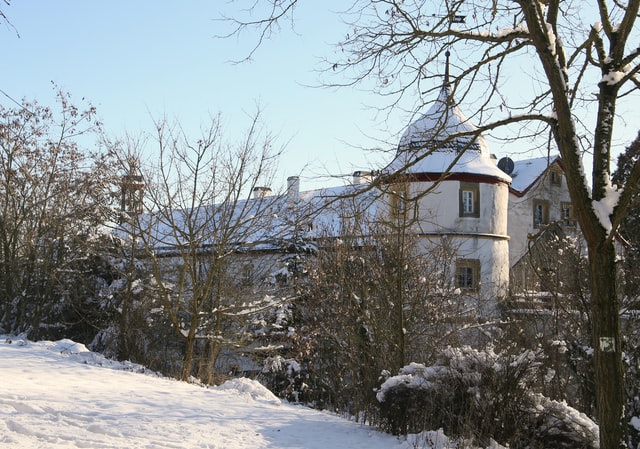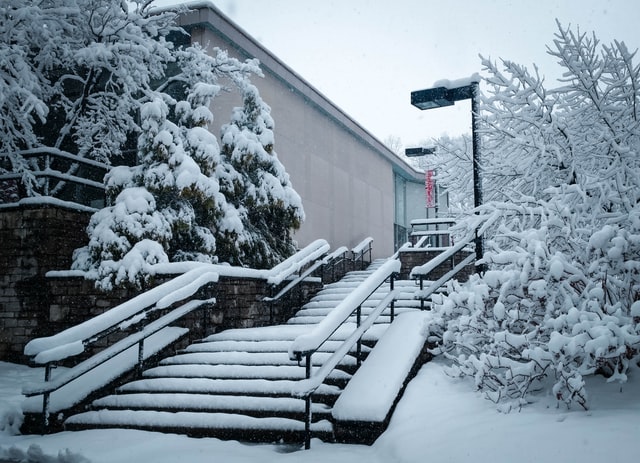Showing a beautiful garden, terrace, or balcony full of natural plants all year round depends largely on the plants you choose for your home. The weather is one of the main factors to assess before buying. If you live in an area with extreme temperatures, here is a selection of plants that will resist both cold and heat.
Bet on plants that survive both cold and heat, if you want a garden that is always alive and cheerful despite the harsh frosts of winter and the endless days of sun and heat in summer. There are quite a few options both for pots and for planting directly into the ground. Here are the hardiest plants, shrubs, and flowers.
Contents
Best outdoor plants for extreme climates
Neither the cold nor the heat kill these 10 plants that turn out to be the easiest to care for and maintain in a domestic environment, both on terraces, patios, or balconies and in larger and more exposed gardens. Choose the ones that best suit your needs and like the most to achieve a natural environment for your style.

Oleander
Due to their resistance to cold and heat, in addition to their beautiful flowers, oleanders are common in gardens and green areas for public use such as parks, schools, or medians of roads or streets. It is recommended for large spaces.
They have low maintenance, fast and intense growth so they are perfect so you don’t have to worry too much and can grow up to six meters, making them interesting shrubs to provide privacy and coverage in outdoor areas of a home.
Oleander – also known as flower laurel – needs water, the recommended average watering is between two and three times a week, but you will not have problems with extreme temperatures. Withstands up to 15 degrees below zero and will also not perish when the mercury rises to 40.
Bonus tip: the big problem with this plant is that it is highly poisonous; in fact, it is often named the most toxic in the world.
Aspidistra
Aspidistra pots are classics in many homes. Its long green leaves easily add color and volume. Although they give flowers, they have no ornamental value because they are small and in the area close to the ground, which does not allow them to be seen, covered by the lushness of their characteristic leaves.
Aspidistras are perfect for planting in medium or large-size pots and decorating passageways such as doors, hallways or indoor distributors. For the exterior, they are an interesting resource to flank entrance porches to the house, for example, especially if you have a lot of shade and little sun.
The intense cold or the oppressive heat does not affect these plants that resist very well. You just have to avoid giving them too much time in the sun because the leaves turn yellow. Irrigation is not a problem either; it is one of the few plants that, without being succulent, can endure days without receiving water.
Extra tip: wipe its long leaves with a dry cloth to prevent dust from accumulating and to enjoy its intense green color.
Lavender
Aromatic plants are very popular as plants for the home because they have a good number of advantages: easy to care for, adaptable to any environment, beautiful and useful for the kitchen, for example. Among them, lavender stands out as one of the most beautiful for its characteristic purple
Lavender bushes often grow spontaneously on the edges of any road or road without specific care or irrigation other than the natural one provided by the rain. This fact makes it a rustic plant and demonstrates its strength and resistance, regardless of intense cold and temperatures above 30 degrees.
The lavender plant is perfect as exterior r for small p color and its smell.
Oats and large planters or garden areas where both you project shrubs. It is a plant capable of developing, depending on the land you offer it. Given its perennial nature, you will always have leaves, although the flower, as expected, will only accompany you from spring to summer.
Extra tip: choose very airy spaces and better with many hours of sunlight.
Carnation
With a couple of planters with carnations, your gazebo will become the most striking and cheerful in the neighborhood. This traditional flower can be up to a meter long and has a wide variety of colors and combinations for you to choose from.
Dianthus caryophyllids, which is how the carnation is scientifically called, is a Mediterranean plant that, however, does not suffer from frost or high temperatures. It likes the sun and abundant watering to be able to develop its flowers in greater quality, size, and durability.
There are two main types of carnations, those of garden or ram that you can also put in pots and those that are known as greenhouse carnations that are permanent flowering and not only in spring and summer.
Extra tip: although you can sow and also reproduce carnations by cuttings, the easiest thing is to buy an already grown plant.
Clematis
This plant may not sound familiar to you because of its name, however, it is one of the most recommended and interesting flowering climbers, when looking for resistant plants that do not give much work, but look perfect all year round, despite months with frosts and harsh summer with intense sun.
Clematis has a wild soul so it is capable of living in rural areas naturally and without particular care, given its climbing character, it is perfect for covering large areas in the garden or walls on terraces. They offer a fragrant flower whose smell is reminiscent of jasmine. With more than 400 cultivable species you can easily choose colors and shapes if you decide on this plant.
The most important thing to be successful with clematis is to choose the right place to put or plant it, as well as take care of the substrate that is offered to them. While their roots need only just enough moisture, the flowers appreciate the warm morning sun.
Extra tip: do not fear this climber for its excessive growth or danger of invasion from the rest of your plants, it is easy to control.
Decorative cabbage
Can you imagine an orchard full of purple and pinkish colors in the middle of winter? If you plant Brassica Oleracea, you will have it, although you will renounce being able to collect and eat these fruits, since they are merely decorative, but not edible. This cabbage that acquires surprising and striking colors during the colder months stands out among winter plants for its originality.
With ornamental cabbage, you will not have to worry about much, except to provide soil low in salt and plenty of water. It resists low temperatures, but it is not suitable for extreme climates in which the thermometers drop below 15 degrees during long periods. Be grateful for sunny areas.
Although you can plant decorative cabbages in pots, keep in mind their size to choose, in a row directly on the ground they form cheerful compositions, perfect to give an original touch to any area of the garden.
Extra tip: beware of caterpillars and aphids are plants prone to these types of pests.
Citronella
If you have looked for natural remedies against mosquitoes, surely you have found a classic recommendation: citronella. This outdoor plant grows in the form of a shrub and its smell – similar to the lemon – is not at all pleasant for mosquitoes.
Citronella is a summer plant and you will have to protect it from frost, but only if you live in a place where it often drops below zero degrees Celsius. If you are going to put it in a pot, it is not difficult to store it during the coldest nights of the year and if you plant it under the windows in the garden to ward off mosquitoes in summer, you would only have to protect it on those nights of extreme cold.
Heat and sun are not a problem for this shrub which, on the contrary, will need hours of sunlight all year round to stay in perfect condition. The irrigation must be very abundant especially in summer.
Extra tip: if you want to sleep with the windows open all summer, put citronella on the flower beds.
Palm tree excels
Although palm trees are associated with tropical climates and resistance to high temperatures, the Trachycarpus Fortune is a palm that can withstand temperatures below zero without major problems and yet does not suffer in climates with hot seasons either.
This palm tree is perfect for the external ornamentation of large gardens; it is even common to see it in public areas such as gazebos. Although it can reach more than 10 meters, there are specimens of less than 50 centimeters, ideal for small pots.
The sun is necessary for the good development of this palm tree, but not a direct sun that can damage it. The wind also does not favor the growth or the health of the hemp palm or raised palm heart, as it is also known. However, it is a slow-growing plant.
Extra tip: if the tips of the palm leaves turn yellow, do not cut the leaf, just the tip is enough for it to regenerate.
Rosebush
Despite what one might think, the rose bush, in addition to being the most popular flower shrub in the world, are resistant plants to both high and low temperatures so they have problems offering their famous flowers anywhere on the globe regardless of cold And heat.
Size is not a problem either, if you choose to put a rose bush on your terrace or garden because between 2 and 20 meters it is possible to enjoy this floral shrub. There is a great variety of types and species so it is important to choose the one that best suits your case.
Rosebush care is simple: periodic pruning, moderate watering, and lots of light, even in winter that withstands cold temperatures do not mean that it prefers shade in your case, it is quite the opposite.
Extra advice: Never overwater roses at dusk, you run the risk of mold and form the end with them.
Opuntia Maxima
Perhaps from the name, you don’t know what plant this is, but we mean prickly pears and cacti, yes, with thorns, you probably have a closer idea of which plant is. It is a succulent that does support frost well, but not all do, be careful when choosing this type of plant if you live in areas of extreme cold.
The heat is easy to think that it will not be a problem for the cactus that are related to the desert, but what about the cold? Freezing temperatures can be a problem for some of these plants, but not all. This is precisely the case of Opuntia Maxima, which is one of the best cactus plants to resist heat and cold without a problem.
The prickly pear, in addition to being a cactus, is succulent which means that its leaves serve as a water reservoir. The resistance of this type of plant also provides a very personal touch to terraces or gardens.
Extra tip: this plant never produces leaves, it has already changed them for thorns, but it does show showy flowers.
These top ten of plants that resist cold and heat very well have very varied proposals so that you can find just what you need, whether you have a large garden or a small balcony. However, if you have doubts or are looking for other types of plants, the best option is to go to a nursery or specialized store and let yourself be guided or consult your questions about temperature ranges or the best plants for each situation.







